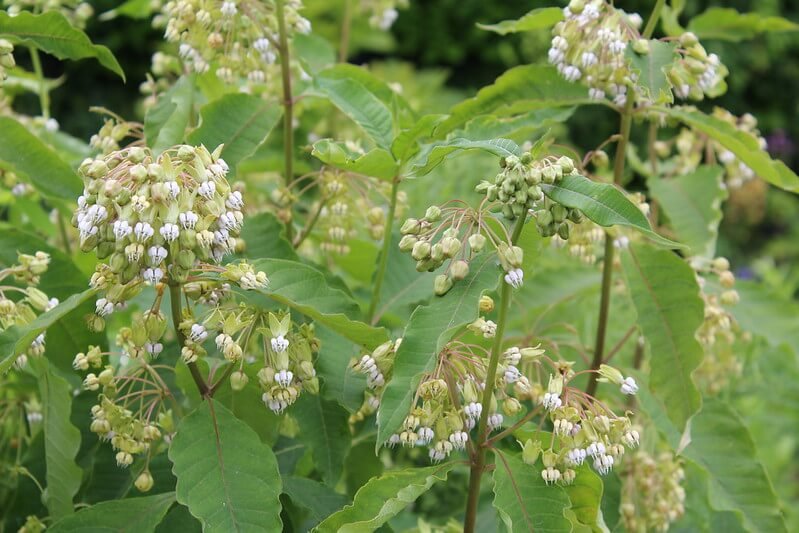Swamp Milkweed (Asclepias incarnata)
Swamp milkweed is a beautiful clump-forming, well-behaved member of the milkweed family. It is one of the preferred host plants for the Monarch butterfly (USDA) and its flowers are very popular with many kinds of insects, especially our native bees, butterflies, skippers, and even the occasional hummingbird (illinoiswildflower.info). Thus, it is recommended as a monarch nectar source (Xerces.org) and it is recommended as a preferred pollinator plant by Xerces Society (Xerces.org). This deer-resistant plant grows best in moist soils but will tolerate average soils, especially with some mulch around it. These plants have deep taproots and are best left undisturbed once established, but keep in mind that the foliage is slow to emerge in spring, so don’t give up on it. It is also an excellent late-season butterfly and moth plant, providing an abundant amount of nectar.
Photo credit: John Blair
Swamp milkweed is a beautiful clump-forming, well-behaved member of the milkweed family. It is one of the preferred host plants for the Monarch butterfly (USDA) and its flowers are very popular with many kinds of insects, especially our native bees, butterflies, skippers, and even the occasional hummingbird (illinoiswildflower.info). Thus, it is recommended as a monarch nectar source (Xerces.org) and it is recommended as a preferred pollinator plant by Xerces Society (Xerces.org). This deer-resistant plant grows best in moist soils but will tolerate average soils, especially with some mulch around it. These plants have deep taproots and are best left undisturbed once established, but keep in mind that the foliage is slow to emerge in spring, so don’t give up on it. It is also an excellent late-season butterfly and moth plant, providing an abundant amount of nectar.
Photo credit: John Blair
Swamp milkweed is a beautiful clump-forming, well-behaved member of the milkweed family. It is one of the preferred host plants for the Monarch butterfly (USDA) and its flowers are very popular with many kinds of insects, especially our native bees, butterflies, skippers, and even the occasional hummingbird (illinoiswildflower.info). Thus, it is recommended as a monarch nectar source (Xerces.org) and it is recommended as a preferred pollinator plant by Xerces Society (Xerces.org). This deer-resistant plant grows best in moist soils but will tolerate average soils, especially with some mulch around it. These plants have deep taproots and are best left undisturbed once established, but keep in mind that the foliage is slow to emerge in spring, so don’t give up on it. It is also an excellent late-season butterfly and moth plant, providing an abundant amount of nectar.
Photo credit: John Blair
Life Cycle: Perennial
Sun Exposure: Full, Partial
Soil Moisture: Wet, Medium
Height: 4-5 feet
Plant Spacing: 18-36”
Bloom Time: June-August
Bloom Color: Pink
Advantages: Pollinator Favorite, Bird Favorite, Deer Resistant, Great landscaping plant
Host plant: Monarch, Milkweed Tussock Moth, and 11 other species of butterflies and moths use this as a caterpillar host plant in our area (nwf.org)
Complementary Plants: Common Ironweed, Michigan Lily, Cardinal Flower






